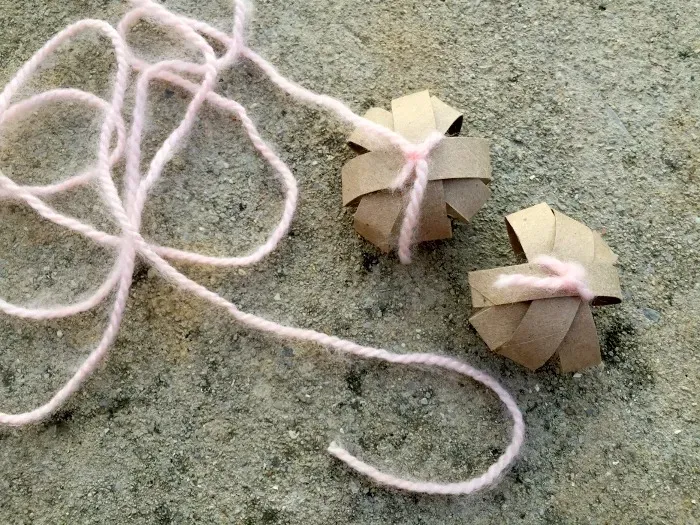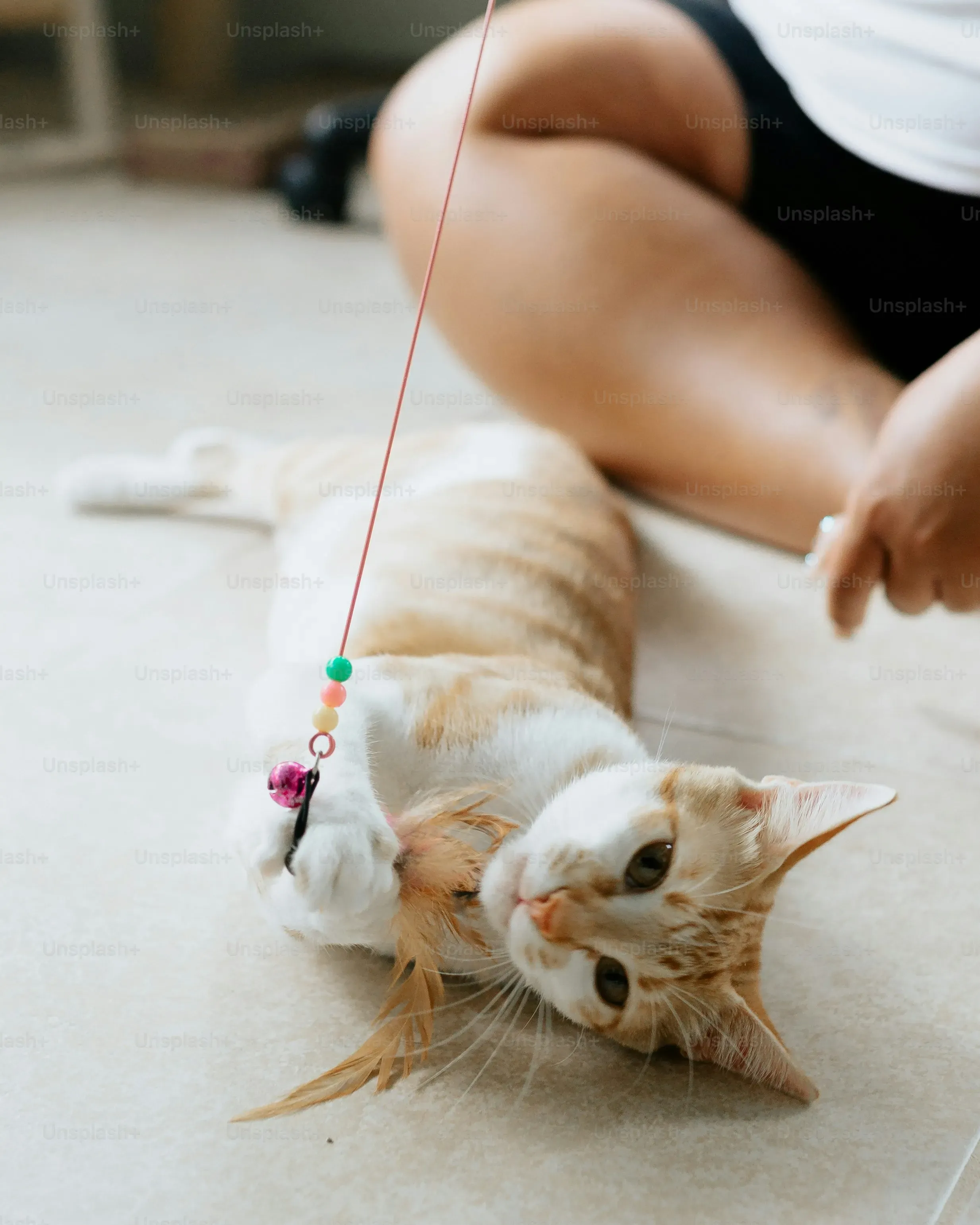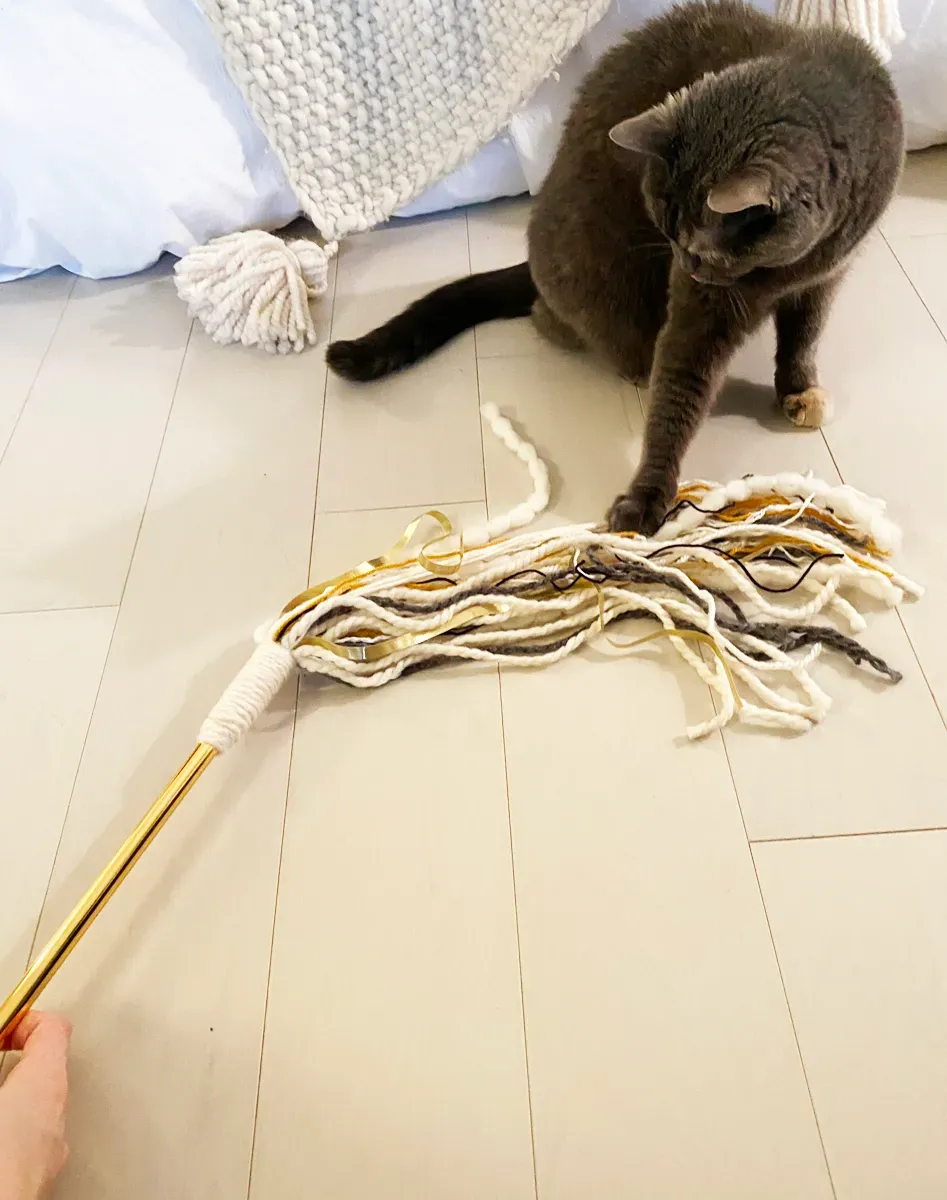Table of Contents
Ever feel like your cat views that expensive toy aisle haul with utter contempt? Like they're silently questioning your financial choices? It happens. Often, the most engaging plaything isn't some battery-powered gadget. It's something simple. Something interactive. Enter the **diy cat string toy**. This isn't about elaborate crafts requiring power tools. It's about transforming everyday items into feline fascination. Making your own saves money, reduces waste, and lets you customize the fun. More importantly, it allows for supervised, engaging play that strengthens your connection. This article isn't just a list of projects. We'll first look at the solid reasons behind the DIY approach. Then, we'll provide straightforward instructions for creating your own string toys. A major focus will be on building them safely – because fun should never come with risk. We'll also explore variations to keep things fresh. Finally, we'll discuss how to use your creation effectively for maximum feline joy. Ready to ditch the store-bought disappointment and craft something truly captivating?
Why Bother Making a DIY Cat String Toy?

Why Bother Making a DIY Cat String Toy?
Ditching the Pet Store Gamble
Let's be honest, walking into a pet store for toys can feel like navigating a minefield of overpriced plastic junk. You grab something shiny, something promising, only for your cat to sniff it once and then bat around the receipt instead. It's frustrating, right? When you make a **diy cat string toy**, you cut out that middleman disappointment and the associated cost. You're using materials you likely already have, turning potential trash into treasure for your feline overlord. Think old t-shirts, cardboard tubes, fallen leaves (catnip-infused, of course). This isn't about being cheap; it's about being smart and effective. Why pay five bucks for a feathery stick when you can make a better one for pennies?
Tailored Fun, Controlled Safety
Store-bought toys often have small parts, questionable dyes, or materials that break down into ingestible hazards. It's a constant worry. Creating a **diy cat string toy** gives you complete control over what goes into it. You choose safe, non-toxic materials. You build it sturdy. Plus, you can tailor the toy to your cat's specific quirks. Does Mittens go wild for crinkle sounds? Add some crinkled paper inside. Is Whiskers obsessed with chasing dangly things? Make the string longer (but always supervise!). This level of customization is impossible with mass-produced items.
- Saves money: Avoid inflated pet store prices.
- Uses recycled materials: Good for your wallet and the planet.
- Full control over materials: Ensure safety and non-toxicity.
- Customizable: Match the toy to your cat's play style.
- Encourages interaction: DIY toys are often best used with you.
Building Bonds, Not Just Toys
The act of making a **diy cat string toy** isn't just about the finished product. It's an investment of your time and effort. Cats, believe it or not, seem to sense this. The play sessions that follow are often more engaging because the toy is unique and, crucially, you're actively involved. Think of it as quality time disguised as hunting practice. You're providing the unpredictable movement, the tantalizing chase, the satisfying "catch." This kind of interactive play is far more stimulating than leaving a static toy on the floor. It reinforces your bond and provides essential exercise and mental stimulation for your cat, reducing boredom and potential mischief.
Simple DIY Cat String Toy Projects Anyone Can Make

Simple DIY Cat String Toy Projects Anyone Can Make
The Classic T-Shirt Wand
Alright, let's start with the absolute basics for a **Simple DIY Cat String Toy Projects Anyone Can Make**. Got an old t-shirt destined for the rag pile? Perfect. Cut it into strips about an inch wide and maybe a foot or two long. Gather a bunch of these strips together. Tie them securely onto the end of a stick – a dowel rod, a sturdy branch from the yard, even a thick unsharpened pencil works. Make sure the knot is tight; cats are surprisingly strong little predators. You want a good cluster of fabric strips at the end. That's it. You've got a wand toy. The fabric is soft, the motion is enticing, and if they manage to chew a bit off, a small piece of cotton t-shirt is generally less concerning than plastic shards.
Cardboard Tube Danglers
Another ridiculously easy option for a **Simple DIY Cat String Toy Projects Anyone Can Make** involves those cardboard tubes you're probably just tossing anyway. Toilet paper rolls, paper towel rolls, even gift wrap tubes. Cut the tube into several rings, maybe half an inch wide. Poke a small hole in one edge of each ring. Thread some sturdy string or twine (cotton or hemp is good) through the holes, tying a knot to secure each ring a few inches apart along the string. Leave a good length of string at the top to hold onto. You've created a series of dangly, lightweight, and slightly crinkly rings. Cats love batting these around. They make a satisfying, soft clacking noise. Just keep an eye on them to make sure they aren't trying to eat the cardboard.
- T-Shirt Wand: Requires old fabric strips, a stick, and a strong knot.
- Cardboard Tube Dangler: Needs cardboard tubes, string, and a hole punch or sharp pencil.
- Both are quick to assemble and cost next to nothing.
- Always supervise play with string toys.
Safety First: Building a Secure DIY Cat String Toy

Safety First: Building a Secure DIY Cat String Toy
Prioritizing Safe Materials and Construction
so you're getting into the swing of making a **diy cat string toy**, which is awesome. But before you get carried away with glitter and tiny bells, let's talk safety. This is non-negotiable. Cats, bless their curious little hearts, investigate the world with their mouths. Anything small enough to swallow is a potential choking hazard or can cause serious internal blockages. Avoid anything that can easily break off: small beads, plastic eyes, thin elastic bands. Also, be wary of certain fibers; some synthetic strings or yarns can unravel into long strands that are incredibly dangerous if ingested, potentially "sewing" up their intestines. Stick to natural materials like cotton, hemp, or wool yarn (supervised, as some cats chew wool). Ensure all knots are incredibly secure. Pull on them hard before giving the toy to your cat. You want that toy to stand up to some serious batting and gentle biting without falling apart.
Beyond Basic: Creative Twists for Your DIY Cat String Toy
Adding Intriguing Textures and Sounds
you've mastered the basic wand and the cardboard dangler. Feeling adventurous? Let's spice up that **DIY cat string toy**. Cats are sensory creatures; they love different textures and sounds. Instead of just plain fabric strips, try incorporating other materials. Think crinkly cellophane (securely enclosed, like inside a fabric sleeve). How about some felt shapes? Felt has a nice, slightly rough texture many cats enjoy batting. You could even tie on a few corks – they're lightweight and have an interesting feel. For sound, a small, securely sewn-in bell or even a few dry beans inside a fabric pouch can add that enticing rattle. Just ensure whatever you add is firmly attached and won't break off easily.
Incorporating Varied Materials and Shapes
Don't limit yourself to just fabric and cardboard for your **DIY cat string toy**. Look around for other cat-safe items. Wine corks (make sure they aren't synthetic or treated with anything weird) can be drilled and threaded onto the string. Large wooden beads (untreated, undyed) offer a different weight and feel. Cut interesting shapes out of felt or sturdy fabric – little fish, mice silhouettes, abstract blobs. Attach multiple items of different shapes and sizes along the string to create a varied target for their pouncing pleasure. A mix of soft, hard, bumpy, and smooth elements keeps their hunting instincts guessing and prevents boredom.
- Crinkly cellophane (securely enclosed)
- Felt shapes or scraps
- Clean, natural corks
- Untreated wooden beads
- Small, securely sewn-in bells or dry beans for sound
- Varied fabric types (denim, fleece, cotton)
Making it a Puzzle or Challenge
Want to elevate the **DIY cat string toy** experience? Turn it into a bit of a game. Instead of just dangling, create attachments that require a little more interaction. Maybe tie a small, secure pouch at the end of the string that you can hide a treat or some catnip inside (for supervised play only!). Or create a series of fabric knots or braids along the string that they have to "untangle" with their paws. You could even attach the string to a slightly weighted object that they have to work to pull or manipulate. The goal is to add a layer of mental stimulation beyond just the physical chase, tapping into their natural problem-solving skills.
Playing Smart: Using Your DIY Cat String Toy Safely

Playing Smart: Using Your DIY Cat String Toy Safely
Always Supervise Play Sessions
Alright, you've crafted your magnificent **diy cat string toy**. Looks great, right? Your cat is probably already eyeing it with predatory glee. Here's the absolute golden rule: Never, ever leave your cat unsupervised with a string toy. This isn't a chew toy to leave lying around. String, if ingested, is incredibly dangerous. It can cause serious internal damage, bunching up intestines like a terrible accordian. Think of this toy as an interactive tool for play sessions with you. You are the handler, guiding the "prey" and watching for any signs they might be trying to chew off and swallow pieces of string or attached items. When playtime is over, the toy gets put away, out of reach.
Proper Storage is Non-Negotiable
So, where does this enticing, yet potentially hazardous, **diy cat string toy** go when you're not actively playing? Out of sight, out of mind, and definitely out of paw's reach. A high shelf, a closed drawer, a container they can't possibly open. Cats are surprisingly resourceful when they want something. Don't underestimate their ability to scale furniture or pry open seemingly secure spots. Leaving a string toy accessible is an open invitation for trouble the moment you turn your back. This isn't being overly cautious; it's being responsible. A few seconds of unsupervised chewing could lead to a frantic, expensive trip to the emergency vet.
Consider these storage options:
- Locked cabinet
- High shelf (ensure it's stable)
- Container with a secure lid
- Drawer they cannot open
Read Your Cat's Cues and Stop When Needed
Interactive play with a **diy cat string toy** should be fun for everyone, but pay attention to your cat. Are they getting overly frustrated? Panting heavily? Are their ears pinned back? These can be signs they're overstimulated or stressed. A good play session ends before they reach that point. Aim for several short sessions throughout the day rather than one long, exhausting one. And if they start focusing more on chewing the string itself rather than batting the toy, it's time to redirect their attention or end the session. The goal is simulating hunting, not providing a snack or a dental floss alternative.
Final Thoughts on Your DIY String Project
So, there you have it. A bit of string, maybe some scraps, and a willingness to bypass the pet store's endless aisle of plastic. Building a **diy cat string toy** isn't rocket science, and honestly, your cat probably won't care if it's perfectly symmetrical. What matters is the interaction, the supervised play, and the simple fact that you bothered to make something just for them. Keep it safe, keep it engaging, and accept that sometimes, the simplest things are the ones they actually use. Enjoy the chase.